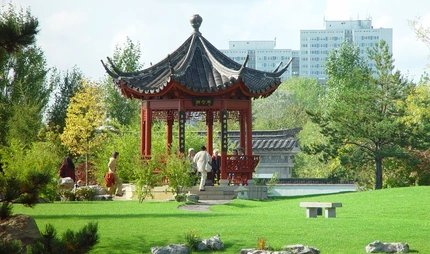
Körnerpark
Idyll in the gravel pit
Körnerpark is one of the most beautiful green spaces in Berlin.
In 1916, entrepreneur Franz Körner made the city of Berlin an offer it could not refuse. He had a gravel pit located at the junction of Jonasstraße, Schierkerstraße, Wittmannsdorfer Straße and Selkestraße. Körner wanted to bequeath it to the city, on the condition that a park would be created there that bears his name. The concept proposed by Neukölln Horticulture Director Hans Richard Küllenberg merged architectural and horticultural design to create a monumental edifice in a way typical of the turn of the last century. The idyllic garden area has experienced ups and downs in the course of its hundred years. It was once lauded by the media as “Neukölln’s Sanssouci” and “Berlin’s most beautiful gravel pit”, while other reviled it as “Neukölln’s Misery”. After the Second World War, the park fell more and more into a state of disrepair. It was not until 1977 when its reconstruction began as one of the largest construction projects in the district at the time.
The Körnerpark today
Today, long stairs lead with balustrades down to the lawns which are between five and seven metres (16-23 feet) below street level. Water splashes down six levels before a fountain takes it up and spits it back up into the air. Small canals, trimmed hedges, a colourful flower garden, and plane trees make Körnerpark one of the most beautiful green spaces in all of Berlin. Since 1983, the former greenhouse has been home to the municipal Galerie im Körnerpark and a café. The opening exhibition presented drawings by Markus Lüpertz, who was working at the time in the former studio in a side wing on art in public buildings. For more than 30 years, the Galerie im Körnerpark has been a key cultural centre for Neukölln and presents nationally and internationally renowned contemporary artists. The free outdoor summer concert series and the indoor Salonmusik series in spring and autumn bring music to park year-round.



